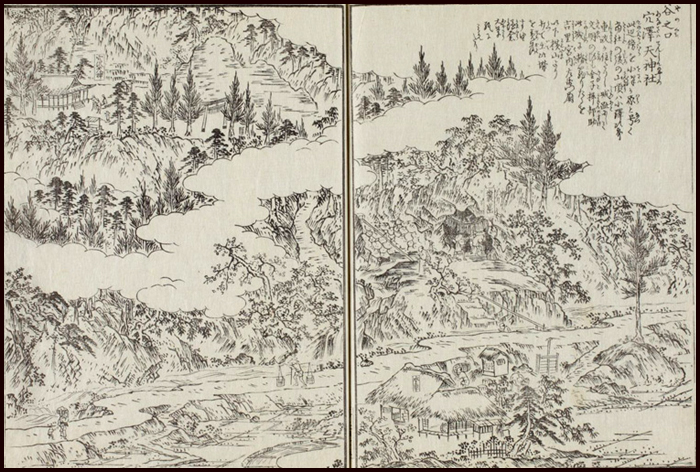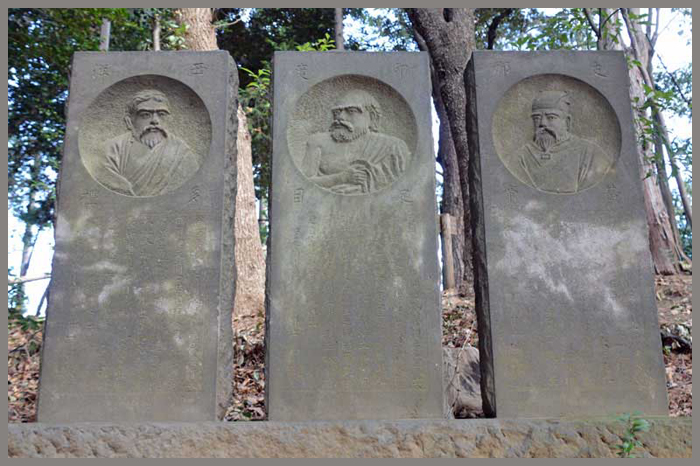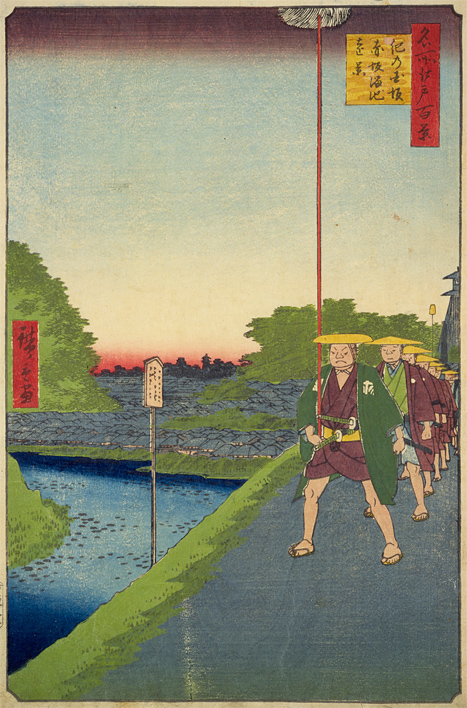[ . BACK to DARUMA MUSEUM TOP . ]
. Famous Places and Power spots of Edo 江戸の名所 .
::::::::::::::::::::::::::::::::::::::::::::::::::::::::::::::::::::::::::::::::::::::::::::::::::::::::::::::::::::::::::::::::::::::::::::::::::::::::::::::::::::::::::::::::::::
Edo hyaku Benten 江戸百弁天 100 famous Benten in Edo
. . . . . pilgrimages to Benten sanctuaries
 - - - - - Benten on a dragon - - - - -
. Benten 弁天 / 辨天 / 辯天 / Benzaiten 弁財天 .
- - - - - Benten on a dragon - - - - -
. Benten 弁天 / 辨天 / 辯天 / Benzaiten 弁財天 .
Goddess of Music, Poetry, Learning, Art
River Goddess, Patron of Children / Protector of the Nation
::::::::::::::::::::::::::::::::::::::::::::::::::::::::::::::::::::::::::::::::::::::::::::::::::::::::::::::::::::::::::::::::::::::::::::::::::::::::::::::::::::::::::::::::::::
Edo roku Benten 江戸六弁天 Six famous Benten in Edo
千歳 Chitose, former 本所 Honjo
一ツ目弁天 Hitotsume Benten / 江島杉山神社 Shrine Ejima Sugiyama Jinja
墨田区千歳1-8-2 Sumida ward, Chitose
. . . CLICK here for Photos !
. 冬木弁天堂 Fuyuki Benten .
冬木弁天堂 Fuyuki Bentendo Hall, 宝珠山 Hoshusan
冬木辯天堂 Fuyuki Bentendo
江東区冬木22-31 Koto ward, Fuyuki - the shrine of the Fuyuki family.
 . . . CLICK here for Photos !
. 須崎弁天 / 州崎 / 洲崎 Suzaki / Susaki Benten .
. . . CLICK here for Photos !
. 須崎弁天 / 州崎 / 洲崎 Suzaki / Susaki Benten .
須崎 / 州崎 / 洲崎 Suzaki / Susaki
浮弁天州崎神社 Uki Benten, Shrine Suzaki Jinja
江東区木場6-13-13 Koto ward, Kiba - Sunosaki Shrine
. 滝野川 弁天 Takinogawa Benten .
岩屋弁天 Iwaya Benten - 弁天の滝 Benten Waterfall
松橋弁天洞窟 Matsubashi Benten cave
上野 Ueno
不忍池弁天堂 Shinobazunoike, Bentendo Hall / 寛永寺 Temple Kanei-Ji
台東区上野公園2-1 Taito ward, Ueno Koen Park
 . . . CLICK here for more Photos !
. 区余丁 Yochomachi - Nukebenten .
抜弁天厳島神社 Nuke-Benten,
. . . CLICK here for more Photos !
. 区余丁 Yochomachi - Nukebenten .
抜弁天厳島神社 Nuke-Benten, Itsukushima Jinja
新宿区余丁町8-5 Shinjuku, Yochomachi
. . . CLICK here for more Photos !
::::::::::::::::::::::::::::::::::::::::::::::::::::::::::::::::::::::::::::::::::::::::::::::::::::::::::::::::::::::::::::::::::::::::::::::::::::::::::::::::::::::::::::::::::::
Seven Benten Shrines of Good Fortune in the Eastern Capital
(Tôto shichifuku Benten, 東都 七福弁天)
Utagawa Kuniyoshi 歌川国芳
This series of fan prints (uchiwa) pairs beautiful women with shrines to Benten:
Asakusa chinai Rojo Benten
Asakusa chinai Tafuku Benten
Chomeiji chinai Benten
Fukagawa Hachiman shanai Benten
Fukagawa Susaki Benten
Hitotsume Benten
Shinobazu Benten
- Publisher: Ise-ya Ichiemon
- source and photos : kuniyoshiproject.com... -
 - Fukagawa Susaki Benten
- Fukagawa Susaki Benten
 - Hitotsume Benten
. . . CLICK here for more Photos !
- Hitotsume Benten
. . . CLICK here for more Photos !
::::::::::::::::::::::::::::::::::::::::::::::::::::::::::::::::::::::::::::::::::::::::::::::::::::::::::::::::::::::::::::::::::::::::::::::::::::::::::::::::::::::::::::::::::::
. Edo 江戸三十三ヶ所弁財天霊場 Pilgrimage to 33 Benten Shrines .
Established in 1780.
::::::::::::::::::::::::::::::::::::::::::::::::::::::::::::::::::::::::::::::::::::::::::::::::::::::::::::::::::::::::::::::::::::::::::::::::::::::::::::::::::::::::::::::::::::
江戸弁財天百社 100 Benten Shrines in Edo

Shrines 01 to 30
- reference source : ameblo.jp/ryuuren99... 留連のブログ - 01
Shrines 31 to 40
- reference source : ameblo.jp/ryuuren99... 留連のブログ - 02
Shrines 41 to 50
- reference source : ameblo.jp/ryuuren99... 留連のブログ - 03
::::::::::::::::::::::::::::::::::::::::::::::::::::::::::::::::::::::::::::::::::::::::::::::::::::::::::::::::::::::::::::::::::::::::::::::::::::::::::::::::::::::::::::::::::::
. Legends and Tales from Japan 伝説 - Introduction .
. daija, orochi 大蛇 the huge serpent, great snake .
- often associated with a Benten pond.
................................................................................. Tokyo 東京都
 The Inokashira Benten Shrine in Snow (Shatô no yuki)
The Inokashira Benten Shrine in Snow (Shatô no yuki)
Kawase Hasui 川瀬巴水 (1883 - 1957)
. Inokashira Benten pond 井の頭弁天 / 井ノ頭辨天池 .
ryuukotsu 龍骨 dragon bones
Once a young priest was cutting weeds when by mistake he cut the mouth of a small serpent in two. This small snake was in fact the dragon living in Inokashira pond, so the river out of the pond was carrying blood for three days.
The young priest died from this curse.
The top part of the serpent dragon head flowed all the way to a temple in 中野 Nakano.
The lower of the serpent dragon head is kept at the Inokashira Benten.
These bones were used for rain rituals. If it had not rained for a long time, the bones were taken outside in a special ritual - the then rain would fall!
.
bake-benten 化け弁天 monster-Benten
The 佐内家 Sanai family did not have any children. So the wife went to the Inokashira Benten to make a wish. Indeed, soon after the gave birth to a girl.
The neighbours said this was 神の申し子 a god-given child.
When the girl had grown up, the mother took the girl and both went to the Inokashira Benten to give thanks.
The girl suddenly turned crazy, went to the pond, stared into it and then was lost in the pond.
yooji 楊枝 toothpick
In the compound of the 井の頭弁天堂 Bentendo Hall at Inokashira there was
yanagi 柳 an old willow tree.
The toothpicks for the third Shogun Iemitsu have been made from its branches.
. Legends from 吉祥寺村 Kichijojimura village .
................................................................................. Hachijoo, Hachijō machi 八丈町 Town with 8 Jo
Hachijoojima 八丈島 Hachijo Island
daija 大蛇 huge serpent
On 八丈島 Hachijo Island there was a swamp and a huge serpent was the master of it.
At night it came to the village to kidnap women or cows and threaten the villagers.
Then came 為朝
Tametomo and killed the huge serpent.
He cut it into eight parts of about
ichi joo 1丈 3 m each, hence the name of the island,
hachi joo 八丈
Eight Jo.
The pond became red with blood and was called アカミショー (赤み沢)Akamisho.
To appease the sould of the serpent, a sanctuary of Benten was erected.
A retainer of Tametomo, 忠次郎 Chujiro, was killed in the event and is now venerated as チュージョー様 Chujo sama.
 Tametomo Jinja 為朝神社 Tametomo Shrine
Tametomo Jinja 為朝神社 Tametomo Shrine
at 東京都八丈町大賀郷大里
. Minamoto no Tametomo 源為朝 (1139 – 1170) .
(also known as Chinzei Hachirō Tametomo (鎮西 八郎 為朝)
After the Hōgen Rebellion,
the Taira cut the sinews of Tametomo's left arm, limiting the use of his bow, and then he was banished to the island of Ōshima in the Izu Islands. Tametomo eventually killed himself by slicing his abdomen, or committing seppuku.
- quote wikipedia -
23 legends to explore
................................................................................. Hachioji 八王子市
tatsu 竜 dragon,hakuja 白蛇 white serpent
大谷弁天 Otani Benten is known for its power to help women.
One day a woman came to make a wish, and when the wish was granted she came back to the Shrine to express her gratitude.
Suddenly it became cloudy and dark. From the 弁天池
Benten Ike pond at the side of the Benten Shrine a dragon came out and ascended to heaven. On the way he began to make painful sounds and fell down.
A lightning struck 大松 the great pine tree. The large tree split into three and out of it came a white serpent of about 60 cm. It burst into white powder and fell dead.

the Bentenike pond
. ryuu, ryū 龍 tatsu 竜 と伝説 Ryu - dragon legends .
................................................................................. Hoya 保谷市
bake Benten 化け弁天 monster-Benten
Once upon a time
near the 駒止橋 / 駒留橋
Komadomebashi bridge a rather wicked Benten was venerated.
If someone passed the bridge, disrespectfully riding his horse, he would fall down.
Sometimes wicked young men wearing woman's headgear came to behave badly.
If a procession with a bride passed the bridge, the wedding would not go well, so nobody even tried to do that.
 - quote
- quote
 東両国の駒留橋 at Komatodomebashi, Eastern Ryogoku / Aoyanagi 青柳 Restaurant
東両国の駒留橋 at Komatodomebashi, Eastern Ryogoku / Aoyanagi 青柳 Restaurant
広重 Hiroshige
- source : ndl.go.jp/landmarks
Komadome Hachiman Jinja 駒留八幡神社
5 Chome-35 Kamiuma, Setagaya, Tokyo
................................................................................. Minato 港区
. kitsune 狐 the fox from temple 増上寺 Zojo-Ji .
................................................................................. Nishi-Tama district 西多摩郡
daija 大蛇 huge serpent
In 桧原村 Hinohara village in 1868, there was クヨ(鉄砲水) a great flooding and a young wife was washed away. A diviner told the family:
"The young wife is at the pond 長峰の池 Nagamine no Ike.
When they went to look for her, she had changed into a huge serpent and lived in the pond. The family built a small sanctuary in the back of their estate and venerated the soul of the woman.
The sanctuary is called
Hebigami sama 蛇神様 Serpent Deity and sometimes 弁天様 Benten sama
There is a pond Nagamine in Niigata.
. . . CLICK here for Photos of the pond!
................................................................................. Ogochi mura 小河内村
. Tengu 天狗と伝説 Tengu legends "Long-nosed Goblin" .
More than 500 years ago, a young man from the village had fallen in love with お里 O-Sato, but the lord of 弁天島 Benten Island, a Tengu, also loved O-Sato.
O-Sato had fallen in love with a young Samurai and the angry Tengu produced a huge flood to wash the Samurai away. O-Sato became a nun. She got healing power and a 霊泉 healing well from Benten sama and begun to heal people. They say she was an incarnation of Benten herself.
..............................................................................................................................................
- reference : nichibun yokai database -
. Benten 弁天と伝説 Legends about Benten .
. Edo, Tokyo 江戸 - 東京 - 伝説 Legends Index .
::::::::::::::::::::::::::::::::::::::::::::::::::::::::::::::::::::::::::::::::::::::::::::::::::::::::::::::::::::::::::::::::::::::::::::::::::::::::::::::::::::::::::::::::::::
 - - - To join me on facebook, click the image !
- - - To join me on facebook, click the image !
:::::::::::::::::::::::::::::::::::::::::::::::::::::::::::::::::::::::::::::::::::::::::::::::::::::::::::::::::::::::::::::::::::::::::::::::::::::::::::::::::::::::::::::::::::::
. Famous Places and Powerspots of Edo 江戸の名所 .
. Legends and Tales from Japan 伝説 - Introduction .
[ . BACK to DARUMA MUSEUM TOP . ]
[ . BACK to WORLDKIGO . TOP . ]
- - - - - #rokubenten #edobenten #sixbenten #benten - - - -
::::::::::::::::::::::::::::::::::::::::::::::::::::::::::::::::::::::::::::::::::::::::::::::::::::::::::::::::::::::::::::::::::::::::::::::::::::::::::::::::::::::::::::::::::::





















































